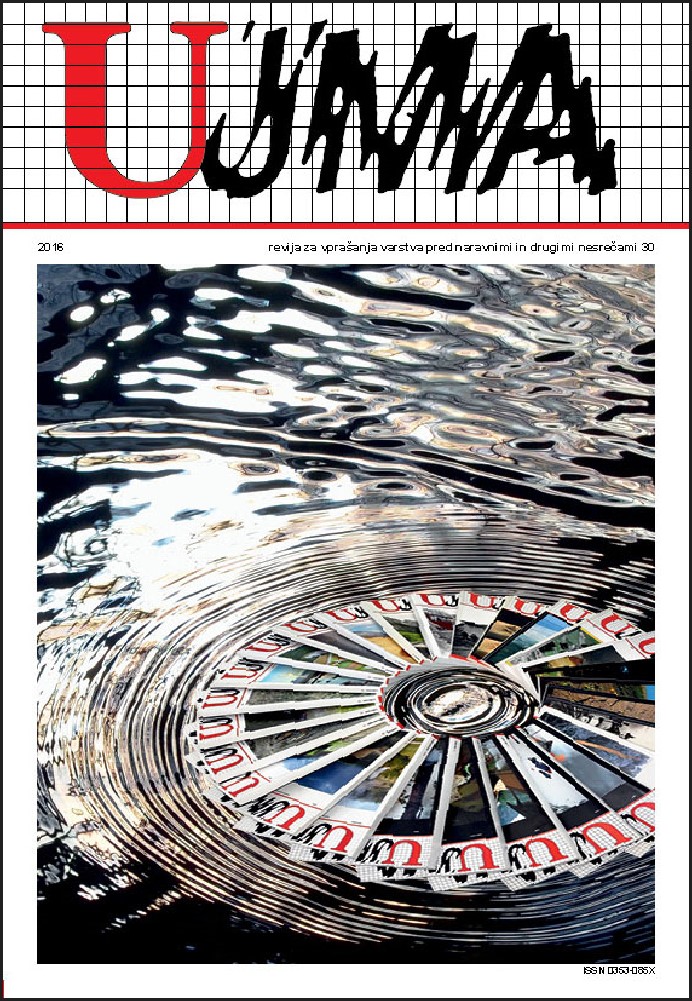VROČINSKI VALOVI V POVEZAVI Z ZDRAVJEM IN PRODUKTIVNOSTJO
Povzetek
Pogostnost in jakost vročinskih valov se v velikem delu Evrope zaradi podnebnih sprememb veča. Visoke temperature zraka močno vplivajo na zdravje in produktivnost prebivalstva, še posebej v mestih. Analiza za Ljubljano in Celje (1961–2015) je pokazala, da je vročinskih valov tudi v Sloveniji vedno več, da se začenjajo prej in končujejo pozneje ter da se njihova jakost veča. Definicija vročinskega vala je bila določena na podlagi literature in izkušenj, uporabili pa smo tudi indeks HMWId. Predstavljamo delni pregled literature v povezavi z zdravjem in smrtnostjo ter s produktivnostjo delavcev. Znanje o prihodnjih še intenzivnejših vročinskih valovih je pomembno za odločevalce, delodajalce in tudi za sile za zaščito, reševanje in pomoč, ki potrebujejo ocene zdravstvenih, gospodarskih in družbenih vplivov vročinskih valov. Delodajalci se morajo zavedati tveganj in poskrbeti, da se ta vedenja razumejo in upoštevajo ter da s primerni ukrepi ohranijo produktivnost, pa tudi zdravje in varnost zaposlenih. Predstavljeni so tudi začetki petletnega evropskega projekta Heat-Shield v okviru programa Obzorja 2020.
Literatura
Climate-ADAPT, 2014. Dostopno na: http://climate-adapt.eea.europa.eu/articles/-/asset_publisher/MomcFwj7CZOC/content/heat-waves (6. 4. 2016).
EEA (European Environment Agency), 2010. The European environment - state and outlook 2010: synthesis. http://www.eea.europa.eu/data-and-maps/explore-interactive-maps/heat-wave-risk-of-european-cities-1 (1. 3. 2016).
EEA (European Environment Agency), 2012. Urban adaptation to climate change in Europe, EEA Report No2, 2012. http://www.eea.europa.eu/publications/urban-adaptation-to-climate-change (7. 4. 2016): 143 str.
D’Ippoliti, D., Michelozzi, P., Marino, C. in sod., 2010. The impact of heat waves on mortality in 9 European cities: results from the EuroHEAT project. Environmental Health, 201, 9: 37.
Fischer, E. M., Schär, C., 2010. Consistent geographical patterns of change in highimpact European heatwaves. Nature Geoscience, 3(6), 398–403.
Franchetti, M., Komaki, G., 2012. Quantification methods for employee health and productivity rates. Int. J. Env. Eng. Res., 1, 104–114.
IPCC Climate Change, 2013. 5th Assessment Report of the Intergovernmental Panel on Climate Change. Cambridge University Press, Cambridge, UK. https://www.ipcc.ch/report/ar5/ (5. 4. 2016).
Kenny, G. P., Flouris, A. D., 2014. The human thermoregulatory system and its response to thermal stress, V: Protective clothing: manafing thermal stress, 2014, 319–365.
Kjellstrom, T., Kovats, R. S., Lloyd, S. J., Holt, T., Tol, R. S., 2009. The direct impact of climate change on regional labour productivity. Int. Arch. Env. Occupat. Health, 64, 217–227.
Komac, B., Melik, A., Ciglič, R., Pavšek, M., Loose, A., Čermelj, S., 2014. Urban Heat Island in the Ljubljana City. V: Counteracting Urban Heat Island Effects in a Global Climate Change Scenario, poročilo projekta UHI, Musco, F. (ur.), Springer, 453 str., http://eu-uhi.eu/download/publications/wp2/UHI_FinalPublication.pdf (4. 7. 2016)
KOS (Kazalci okolja v Sloveniji), 2014. Število umrlih v obdobju vročinskih valov. Dostopno na: http://kazalci.arso.gov.si/?data=indicator&ind_id=685 (10. 4. 2016).
Kosonen, R., Tan, F., 2004. Assessment of productivity loss in air-conditioned buildings using PMV index. Energy Build, 36, 987–993.
Kovats, R.S., Hajat, S., Wilkinson, P., 2004. Contrasting patterns of mortality and hospital admissions during hot weather and heat waves in Greater London, UK. Occup. Environ. Med., 2004, 61, 893–898.
Maloney, S. K., Forbes, C. F., 2011. What effect will a few degrees of climate change have on human heat balance? Int. J. Biometeorology, 2011, 55, 147–160.
OECD, Gross domestic product (GDP). Dostopno na: https://stats.oecd.org/index.aspx?queryid=60702 (10. 4. 2016).
Okoljsko poročilo za leto 2013. 2014. Oddelek za varstvo okolja, Mestna občina Ljubljana, Ljubljana, 42 str. Dostopno na: http://www.ljubljana.si/file/1499934/okoljska-izjava-2013.pdf
Parsons, K., 2014. Human thermal environments: The effects of hot, moderate and cold environments on human health, comfort, and performance, third edition. Florida, CRC Press.
Russo, S., Sillmann, J., Fischer, E. M., 2015. Top ten European heatwaves since 1950 and theri occurrenace in the coming decades. Environmental Research Letters, 10, 124003–124019.
Rogelj Petrič, S., Zajec, D., 2015. Vročinski val z visokimi koncentracijami ozona. Delo, 4. 7. 2015. Dostopno na: http://www.delo.si/novice/slovenija/vrocinski-val-z-visokimi-koncentracijami-ozona.html (10. 4. 2016).
Smith, K., Woodward, A., 2014. Human health: impacts, adaptation, and co-benefits. V: Climate change 2014: impacts, adaptation, and vulnerability. Vol i: global and sectoral aspects. Contribution of working group II to the fifth assessment report of the Intergovernmental Panel on Climate Change. Field, C. B., Barros, V., Dokken, D. (ur.) Cambridge: Cambridge University Press: 754 str.
Trigo, R. M., Pereira, J. M. C., Pereira, M. G., Mota, B., Calado, T. J., Dacamara, C. C., Santo, F. E., 2006. Atmospheric conditions associated with the exceptional fire season of 2003 in Portugal. International journal of climatology, Vol. 26, 13, 1741–1757.
WHO, 2014. Quantitative risk assessment of the effects of climate change on selected causes of death, 2030s and 2050s. Hales, S., Kovats, S., Lloyd, S., Cambell-Lendrum, D. (ur.). Dostopno na: http://apps.who.int/iris/bitstream/10665/134014/1/9789241507691_eng.pdf (3. 3. 2016): 115 str.
Prenosi
Objavljeno
Številka
Rubrike
Licenca

To delo je licencirano pod Creative Commons Priznanje avtorstva-Nekomercialno-Brez predelav 4.0 mednarodno licenco.
Članki so na voljo javnosti pod licenco Creative Commons Priznanje avtorstva-Nekomercialno-Brez predelav 4.0 Mednarodna (CC BY-NC-ND 4.0).


